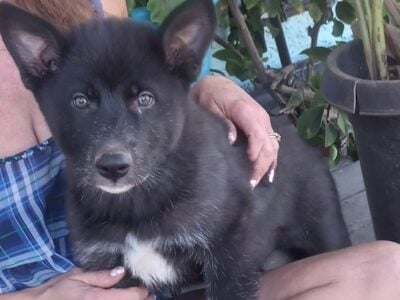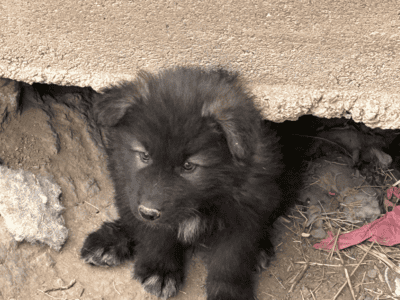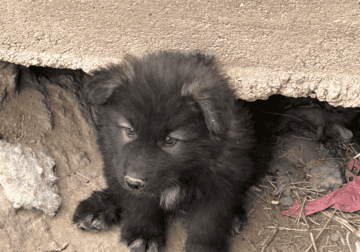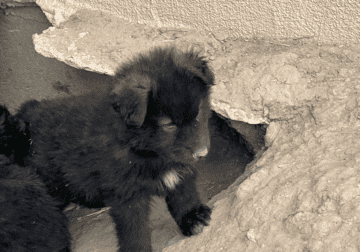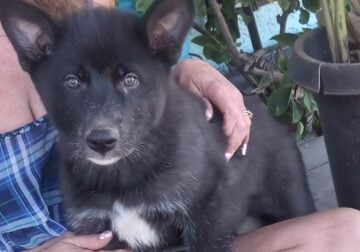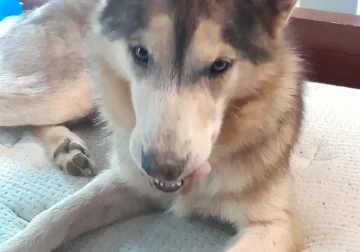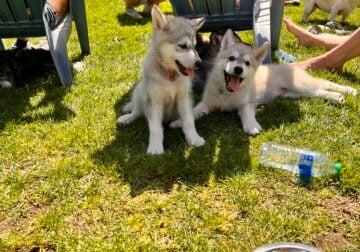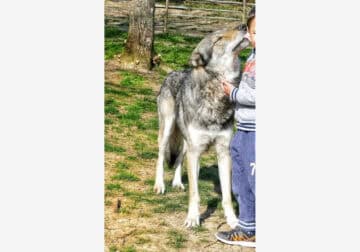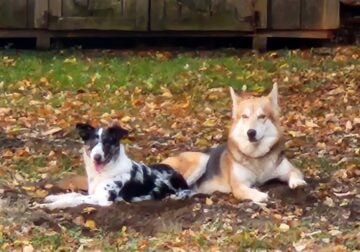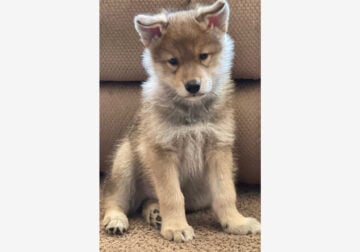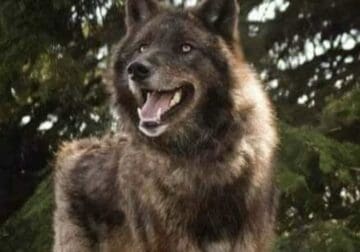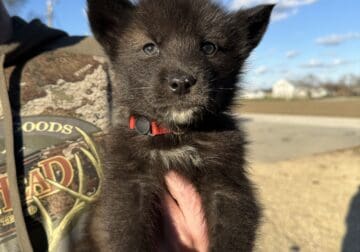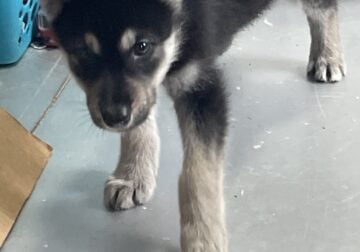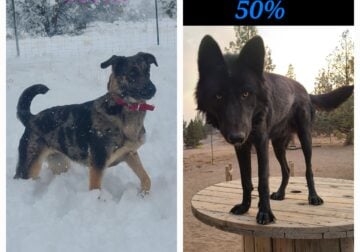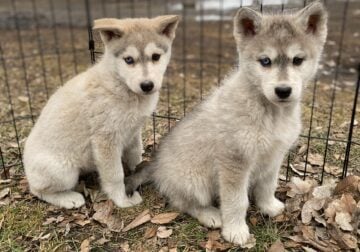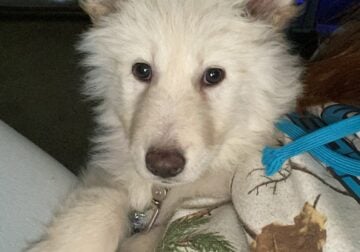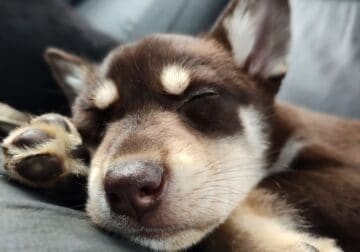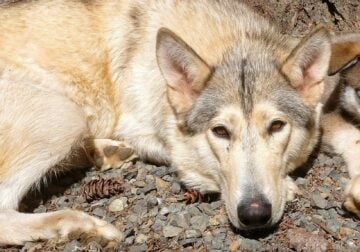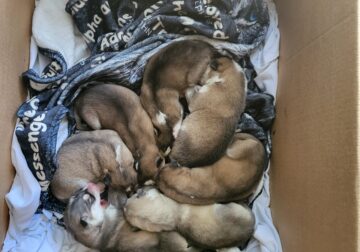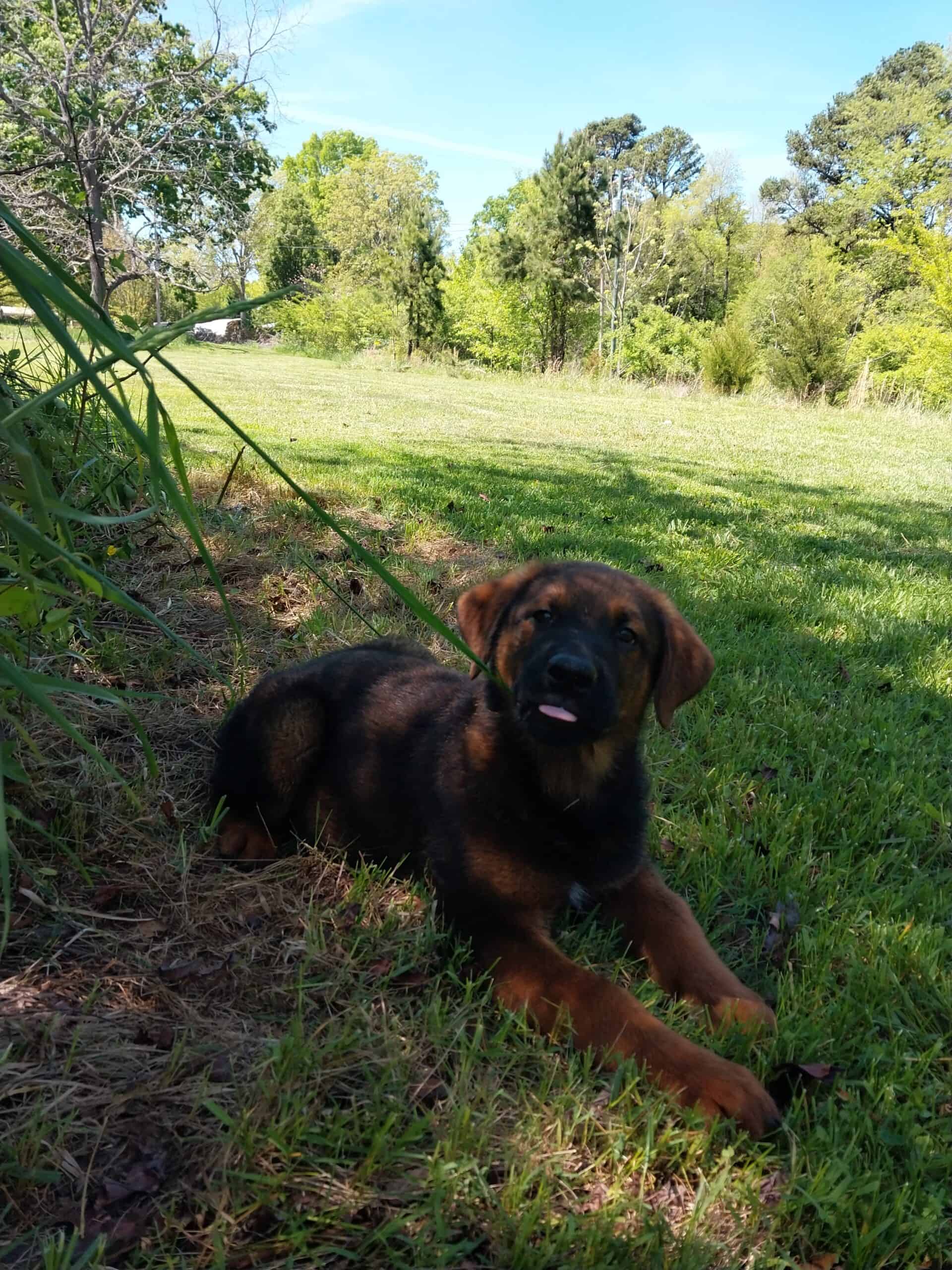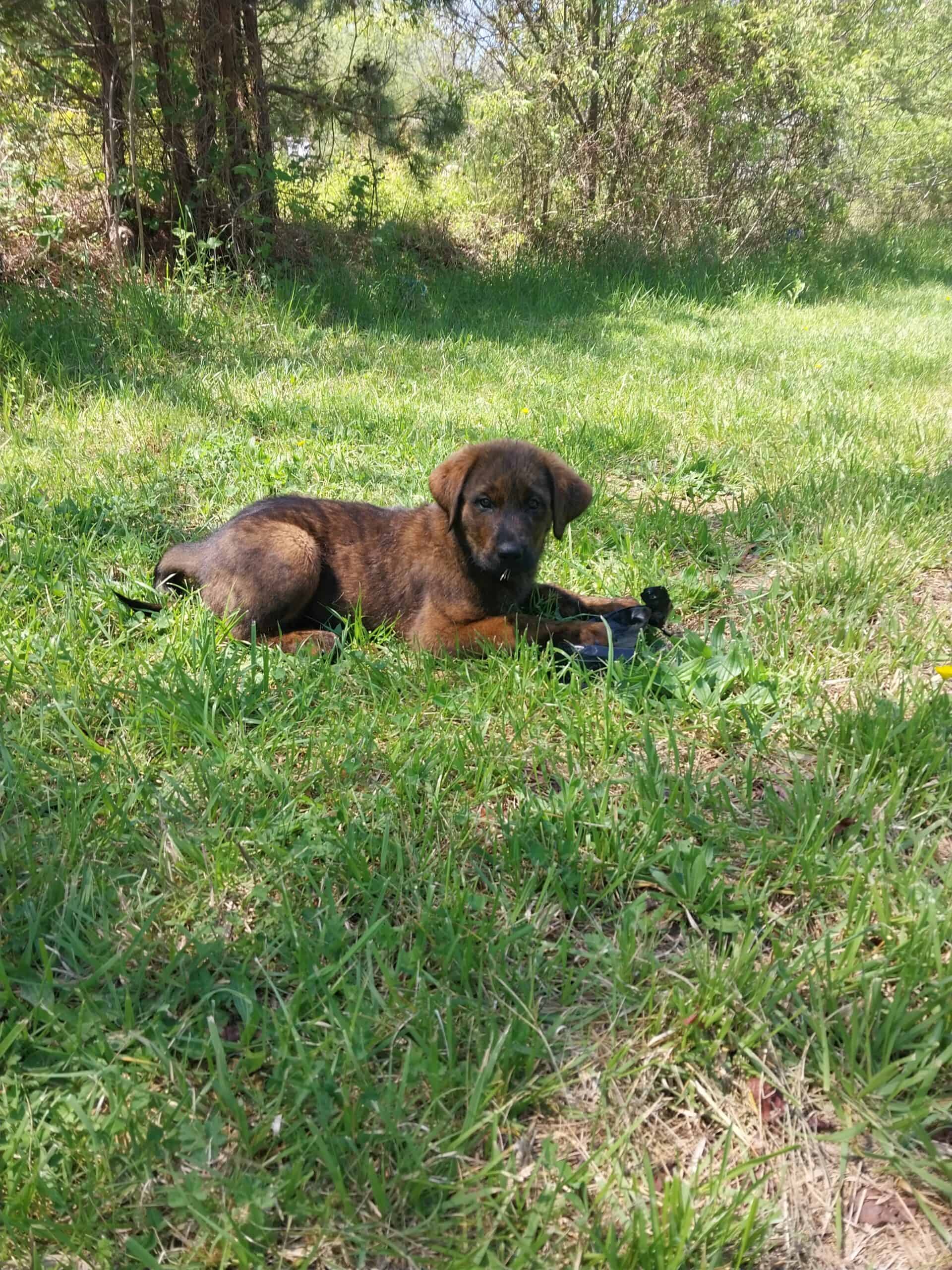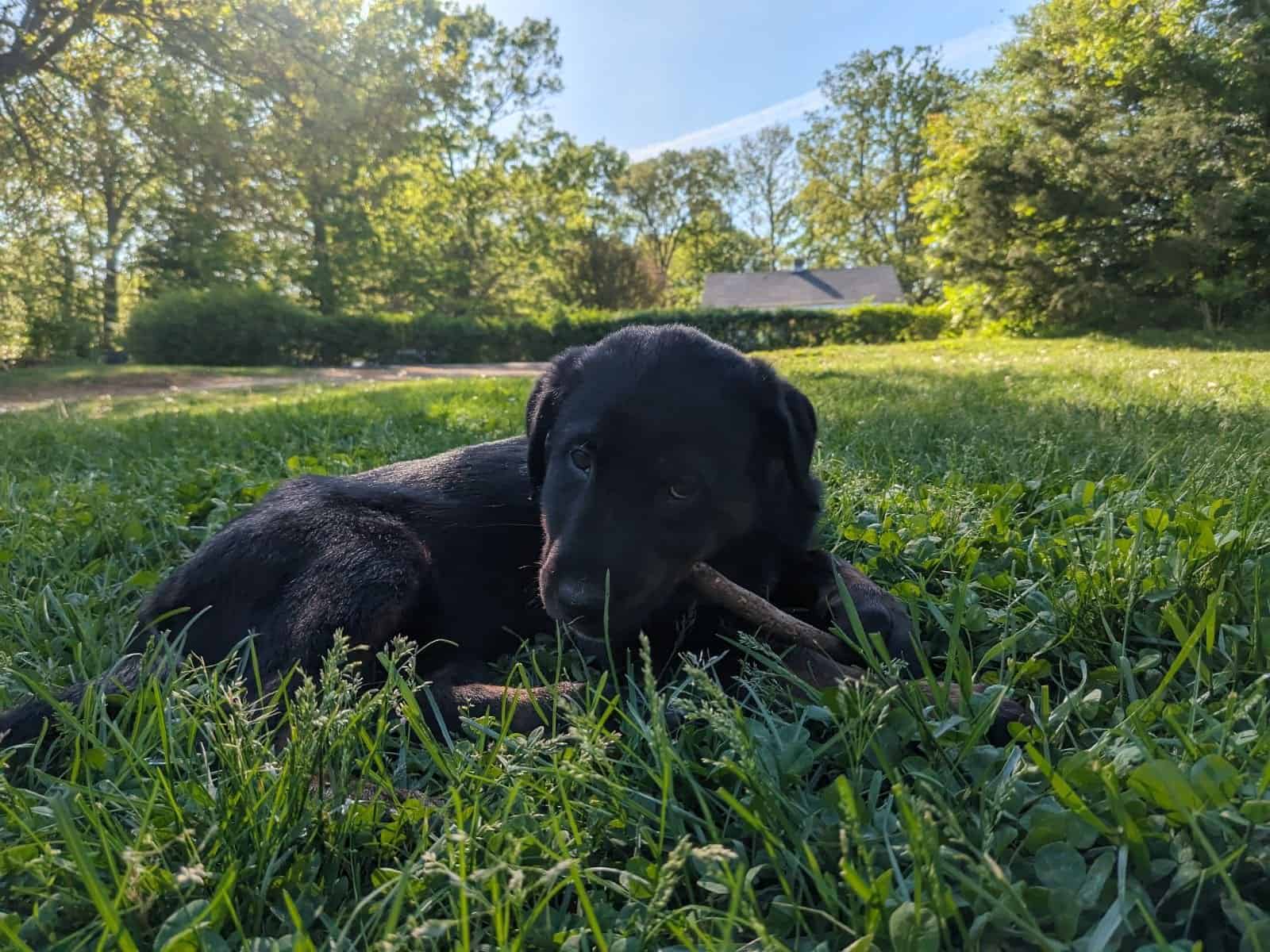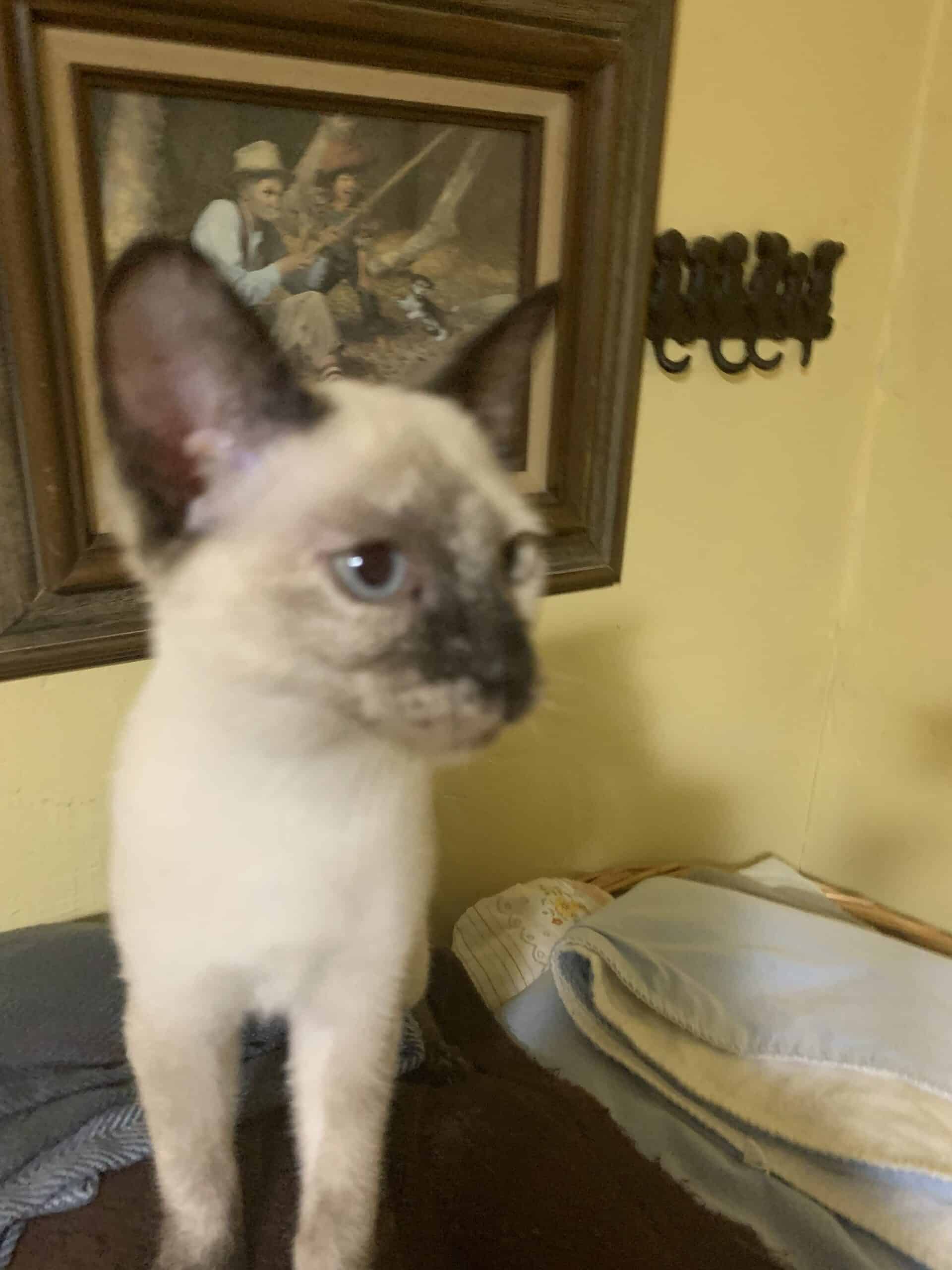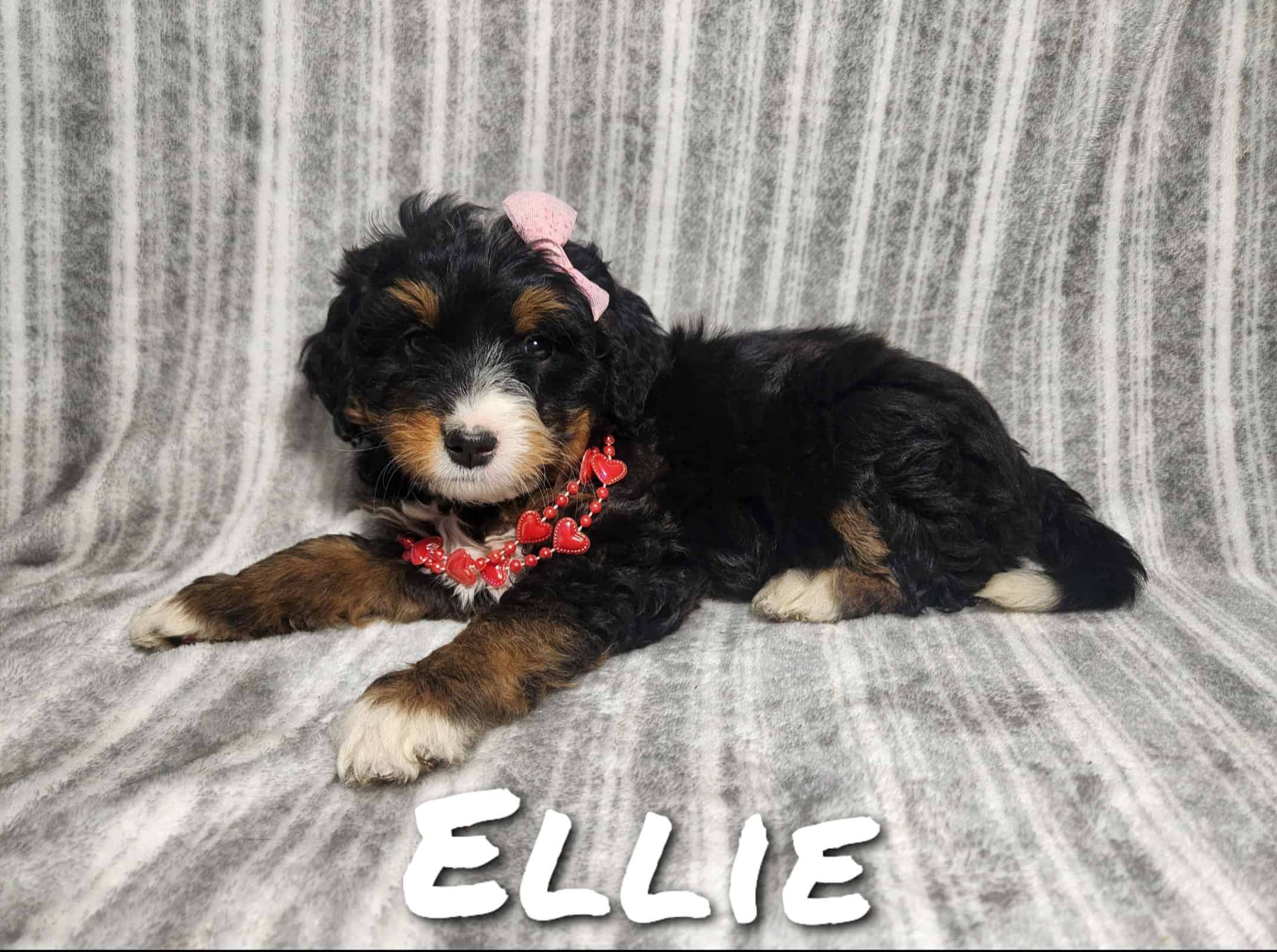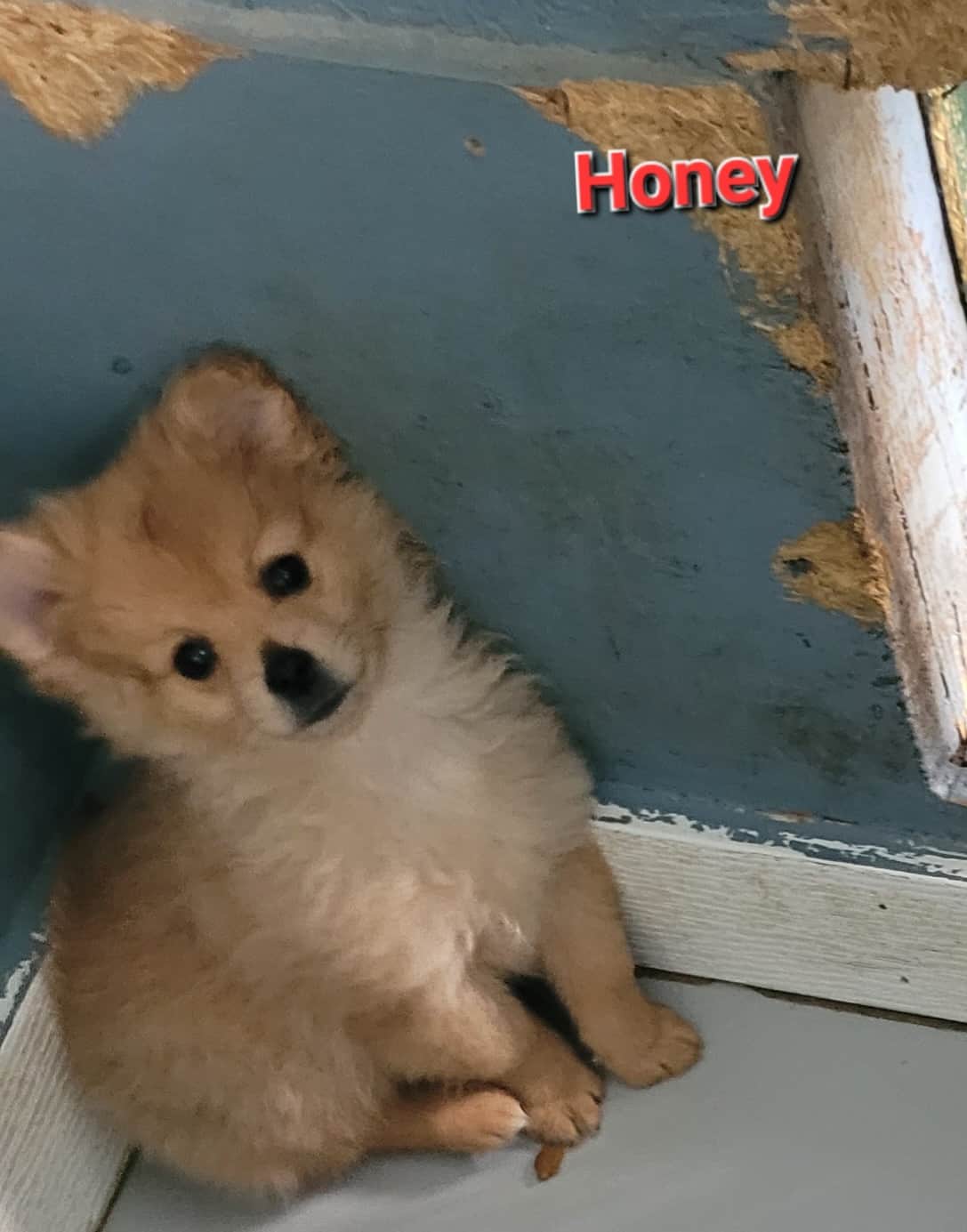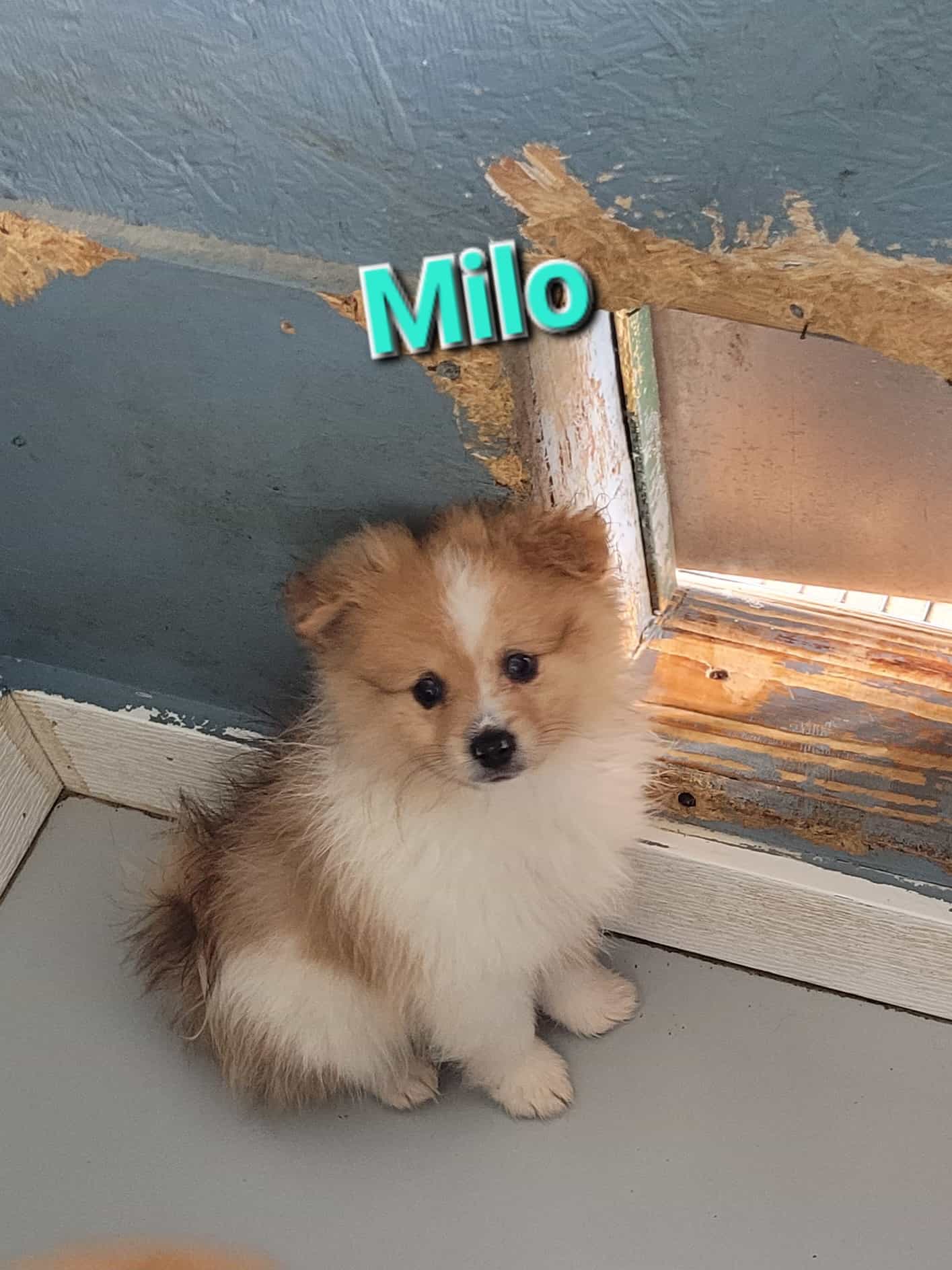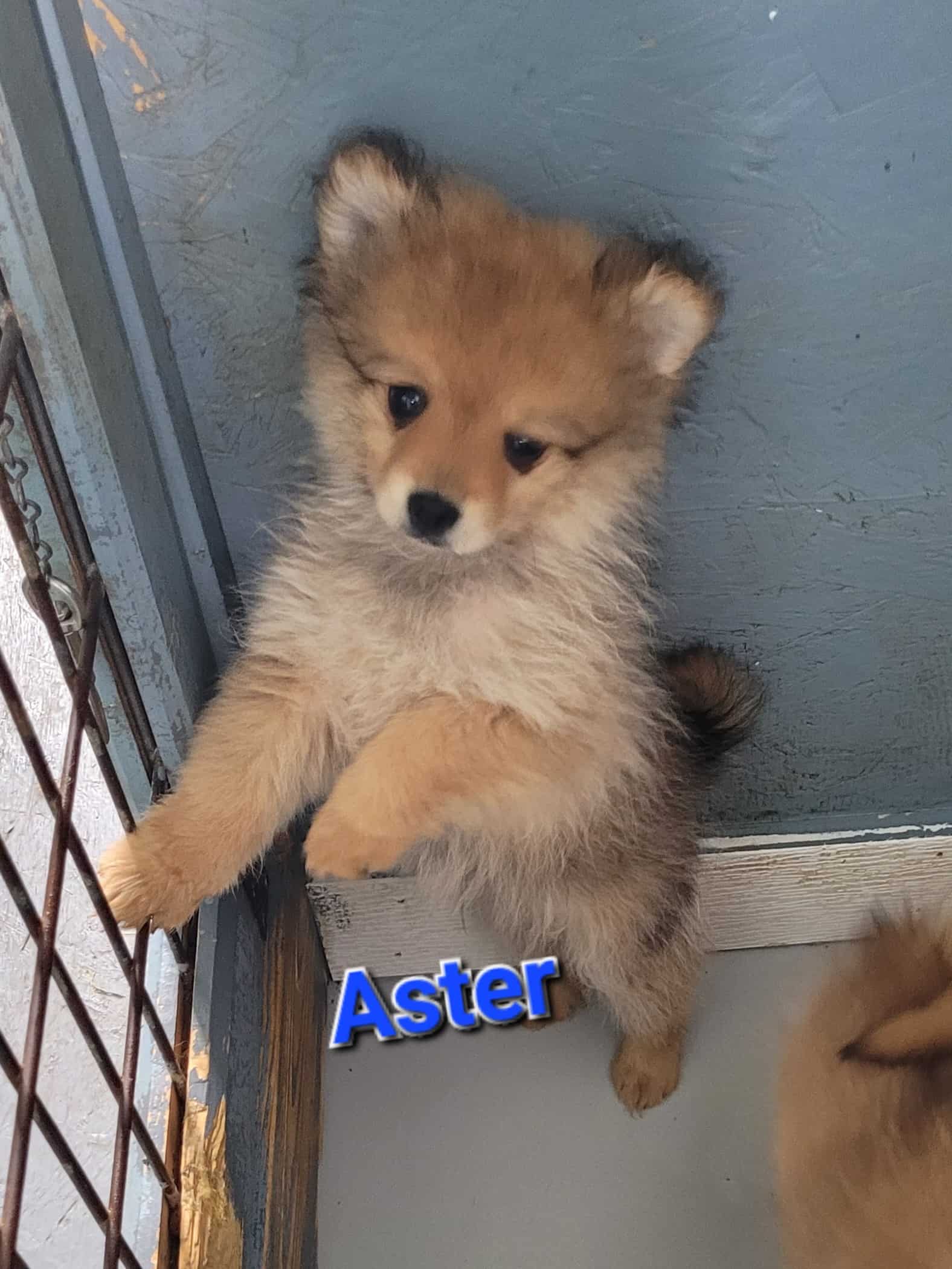Wolfdog for Sale: Truly the Best of Two Worlds
A wolfdog that has minimal or no wolf blood is the way to go if you want a dog that looks like a wolf but is sweet, loyal, and trainable. A few dogs were bred specifically from wolf hybrids to achieve exactly that. A wolfdog for sale with generations of careful breeding to produce a wolf look-alike that does not require special permits, housing, or diets, may refer to a Saarloos, Czech, or Tamaskan Wolfdog.
What is a Wolfdog?
Although the terms wolfdog and wolf hybrid are commonly used interchangeably, there is an important distinction. A wolf hybrid is technically a cross between a pure wolf and a dog or a wolfdog. A wolfdog is a mix of two canids of the same breed. Sometimes, a wolfdog can even refer to purebred dogs that are wolf-like in appearance. Wolfdog breeders can have the intention of lowering or increasing a dog’s wolf content. A wolfdog is more than a generation removed from wolves. The following are examples of wolfdogs:
- Czechoslovakian Wolfdog
- Wolfdog x wolfdog
- Wolfdog x dog
- Northern Inuit Dog – started as a designer dog mix between German Shepherd x Alaskan Malamute x Siberian Husky
- Alaskan Malamute
- Tamaskan Wolfdog
- Siberian Husky
- Saarloos Wolfdog
- American Alsatian – designer dog to resemble extinct Dire wolf in appearance only (German Shepherd x Alaskan Malamute with influences from Great Pyrenees, Irish Wolfhound, Anatolian Shepherd, and English Mastiff)
- Shikoku – between Shiba Inu and Akita in size and closely resembling both breeds; colors are similar to Shiba
- Akita
- Swedish Vallhund
- Samoyed
Official Wolfdogs for Sale
There are only two successful wolfdogs created from wolf hybrids. The Czechoslovakian Wolfdog and the Saarloos Wolfdog have become excellent family dogs. Sometimes included with them is the Tamaskan Wolfdog.
Saarloos Wolfdog for Sale
The oldest of the formal extant wolfdogs, the Saarloos was a designer dog whose founder, Leendert Saarloos, aimed to “put some of the wild” back into the German Shepherd. His efforts began in 1935 in the Netherlands with crosses between the German Shepherd and the Eurasian gray wolf. Even when Saarloos died in 1969, work on the Saarloos Wolfdog continued.
Developing a Companion Dog
Like the Czechoslovakian Wolfdog, the first Saarloos Wolfdogs were nowhere near the desired result. Eventually, breeders were able to achieve loyal companions but never the working dog that was the original hope. Saarloos Wolfdogs were recognized by the Dutch Kennel Club in 1975 and by the FCI in 1981. Saarloos Wolfdogs have more wolf content than any other domesticated dog. Unlike Czechoslovakian Wolfdogs, a typical Saarloos Wolfdog contains 18% to 33% wolf blood. Outcrossing still occurs to maintain the Saarloos Wolfdog type. Dogs approved for their appearance and health are bred to Saarloos Wolfdogs. These offspring again go through an approval process before being backcrossed with Saarloos Wolfdogs. Third-generation dogs can register as purebred Saarloos Wolfdogs. Some breeds that have participated in the Saarloos Wolfdog outcross program are the White Swiss Shepherd, Northern Inuit Dog, and Norwegian Elkhound.
Personality and Appearance
Saarloos Wolfdogs are large dogs with dense, short dual coats and brush tails. Their ears are medium in size and upright while their eyes are usually amber or yellow. The Saarloos has the most wedge-shaped head of the formal wolfdogs with a long muzzle. It is 24 to 28 inches tall and weighs from 70 to 100 pounds. Possible colors are wolf gray, red, sable, or solid white. Saarloos Wolfdogs are loyal and form strong bonds with their owners. They are shy and elusive with strangers, even if socialized well as puppies. The Saarloos Wolfdog is active, strong, and intelligent, and requires firm but sensitive training. It can bond with multiple family members and has a propensity to develop severe separation anxiety when apart from its owners. Saarloos Wolfdogs often do better when they live with another dog that is medium-sized or larger.
Czechoslovakian Wolfdog for Sale
Background
The Czechoslovakian is the second-oldest formal wolfdog, the result of an experiment with mixed results in 1955. Working German Shepherds of the Czech working line used for border patrol were crossed with the Carpathian wolf. The wolf used was known to be tolerant and relatively cooperative with people. Experimenters had the goal of creating aggressive patrol dogs that could better withstand extreme temperatures than the Shepherds. However, most of the crosses were shy around people and almost impossible to train.
Development of the Purebred Czech Wolfdog
By the fourth generation of Czechoslovakian Wolfdogs, with puppies repeatedly crossed back to German Shepherds so they were only a little over 6% wolf, breeders realized the fruition of their labors. These wolfdogs had more stamina, better hearing and night vision, and a keener sense of smell than dogs. However, their entry into major registries was barred, and scientists abandoned the project in the mid-1960s. Most wolfdogs moved to a military base in Czechoslovakian where enthusiasts continued to pursue the breed’s development. It was finally recognized in Czechoslovakia in 1982, by the FCI in 1989, by the UKC in 2006, and accepted by the AKC Foundation Stock Services in 2001. It is also known as the Czechoslovakian Vlcak. Wolf blood was reintroduced to Czech Wolfdog lines at various times to increase vigor. Wolf crosses are now prohibited, but modern Czechoslovakian Wolfdogs possess 11% to 12% wolf content.
Appearance and Personality
Like other wolfdogs, Czechoslovakian Wolfdogs resemble wolves with a dual coat, upright ears, long legs, and a brush tail. Their colors include various shades of gray and silver present in the same dog. Some wolfdogs have yellow or brown mixed in with a gray base. Czech Wolfdogs for sale have notably small ears. They trot and canter equally well, exhibiting tremendous fluidity, balance, and stamina. Czechoslovakian Wolfdogs have become versatile working dogs with high energy and intelligence. They are wary of strangers and are not a great fit for young children. Far from their early days of shyness, Czechoslovakian Wolfdogs are bold and courageous like German Shepherds. Also, like GSD working dogs, they enjoy jobs in herding, search and rescue, and military work. These wolfdogs are independent and not as tolerant of other dogs as their sledding counterparts.
Tamaskan Wolfdog
Origins
Despite not being the product of wolf hybrids perse, some wolf blood has appeared in the DNA of a few Tamaskan Wolfdogs for sale. Wolf lines were present in the hodgepodge of dogs imported from North America to contribute to the creation of the Northern Inuit Dog as early as the 1970s. In England, breeders crossed these imports with Samoyed, German Shepherds, Alaskan Malamutes, and Siberian Huskies to produce a dog that looked like a wolf but made a safe and devoted pet. The result was the Northern Inuit Dog, with several types recognized by different groups.
Modern Companion and Sled Dog of Finnish Descent
Tamaskan Dogs split off from the Utonagan branch of the Northern Inuit Dog in the late 1980s when Lynn Sharkey introduced Finnish sled dogs to the mix. These Finnish athletes were wolf-looking sled racers and represented a combination of the Siberian Husky, Finnish Husky, Czechoslovakian Wolfdog, and various American wolfdogs. They contributed even more wolf blood to the Tamaskan Wolfdog. You can also refer to the Tamaskan Wolfdog as the Tamaskan Dog, Tamaskan Husky, or simply, Tamaskan.
Appearance and Personality
The Tamaskan is a medium to large dog that stands 24 to 28 inches tall at the shoulder and weighs from 50 to 100 pounds. Females are typically smaller than males. Some Tamaskan Wolfdogs look like a high-content wolf hybrid with gray, white, brown, and black dual coats. They have upright ears and a brush tail. The breed is gentle with kids and gets along with other dogs. It shows its strong background in sled racing dogs and can also excel in agility. Tamaskans are intelligent and bond strongly with their families. They are highly active and prone to separation anxiety if left alone too long.
Lifespan of Wolfdogs
Wolfdogs enjoy exceptional health with their large gene pools. The average lifespan of a Tamaskan Wolfdog is 14 or 15 years and that of a Czechoslovakian Wolfdog is between 13 and 16 years. Inexplicably, the Saarloos Wolfdog often only lives 10 to 12 years.
Care
Wolfdogs require more maintenance than other breeds of dogs although not as much care as wolf hybrids.
Grooming
You should brush your wolfdog twice a week. This will increase to as much as every day when your dog blows its coat in the spring and fall. Wolfdogs shed moderately to heavily throughout the year, so they do not make good choices for allergy sufferers. Wolfdogs should adjust readily to a brushing routine if you expose them early. Like any dog, a wolfdog needs a monthly nail trim. You should inspect the ears every few days to make sure there is no evidence of an infection.
Feeding
Wolfdogs require a meat-based diet. They also require fat, vitamins, and minerals. Dogs do not necessarily need carbs, but most will benefit from certain leafy greens, berries, and veggies from the squash family. You should aim for a lean body type with easily palpable ribs and a clear waistline. A good start is to feed 27 to 34 calories per pound of body weight per day. You can increase or decrease this number based on your dog’s body condition. Puppies need to eat two to three times as many calories multiple times a day. Since wolfdogs are closer to dogs than wolves, they can break down starches and thus do not have to rely on raw meat diets. If you decide to feed fresh food, whether homemade, cooked, or commercial raw recipes, the rule of thumb is to provide 2% to 3.5% of your dog’s body weight per day. Puppies need 4% to 12% of their weight in fresh food depending on their age and activity level.
Exercise
One of your biggest commitments to your wolfdog will be exercise. Wolfdogs need 90 to 120 minutes of daily exercise. A Saarloos Wolfdog needs less than the others, and the Czechoslovakian Wolfdog requires more. Since wolfdogs are so smart, they also need mentally engaging activities. Czech Wolfdogs thrive with a job to do.
Training
Each of the wolfdogs has traits that make it challenging to train.
- Czech is independent and willful
- Saarloos is sensitive, shy, and yet, powerful
- Tamaskan is stubborn and strong-willed
The wolfdog’s intelligence makes repetition difficult as these dogs will become easily bored. Positive reinforcement and varied teaching methods are most effective for training your wolfdog.
Wolfdog Puppies
Acquiring a wolfdog puppy that will grow up and be a suitable family pet requires your due diligence. Czechoslovakian Wolfdog puppies for sale are the most common and the only ones that can compete in AKC breed-specific activities. Saarloos Wolfdogs are still part of outcrossing, so make sure you know what you are getting. Tamaskans are still very new and rare. Make sure the breeder has an ethical reputation. Wolfdogs have a window of socialization (four to ten or twelve weeks) that is slightly smaller than dogs, so make sure any puppies you consider show a good level of comfort with human handling. You may not even be able to take a wolfdog pup home until it is nine to fourteen weeks old, so the breeder will have most of the burden of early socialization. As with any dog, pick bright-eyed puppies that are alert, active, and clean. Avoid puppies that look too ribby or stunted and those that have signs of diarrhea or discharge from the eyes and nose.
